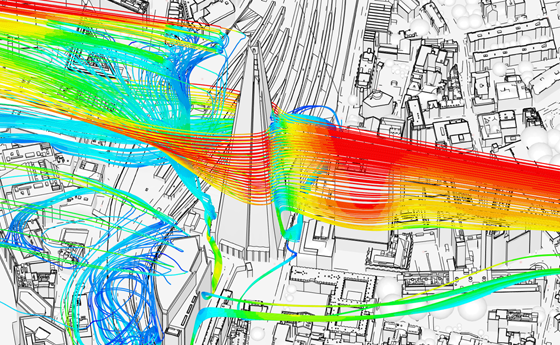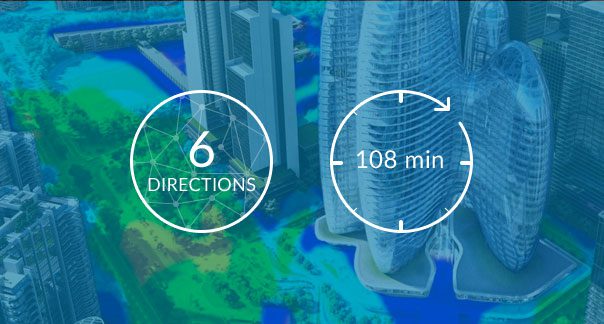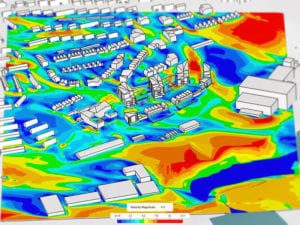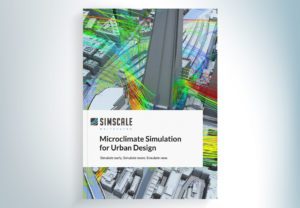
Cloud-based wind simulation to evaluate, validate, and iterate designs quicker than ever before possible
Pedestrian wind comfort, or simply ground-level wind comfort, is a metric used to determine an acceptable level of airflow velocity around built structures for ground-level passersby. These types of wind simulation take into consideration meteorological data, aerodynamics, and comfort criteria. The data regarding the latter two is provided by physical experimentation combined with numerical simulation with computational fluid dynamics (CFD).

By evaluating pedestrian wind comfort with CFD per industry standards such as Lawson, Davenport, and NEN 8100, urban master planners, civil engineers, and architects can predict the behavior of wind flow around buildings early, and benefit from an iterative design process.
This wind modelling assessment includes:
As evaluating pedestrian wind comfort persists to be a cumbersome task as urban environments are constantly adapting and expanding, adding an easy-to-use wind analysis tool that works to simplify this method is a clear next step for your design process.
Through harnessing the cloud, SimScale eliminates the high cost of hardware coupled with steep learning curves that innately come with traditional on-premises simulation solutions. Using SimScale’s cloud-based platform, engineers are enabled to:
Customer Success
Zaha Hadid used SimScale to analyze the pedestrian wind comfort analysis at OPPO HQ. They simulated 6 wind directions in parallel with fast and accurate results.


Check out all of our architecture, engineering, and construction success stories.
See All Stories

Sign up for SimScale
and start simulating now